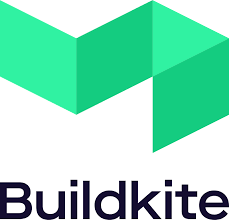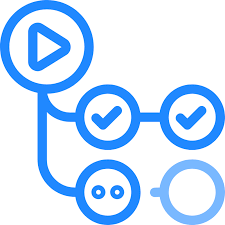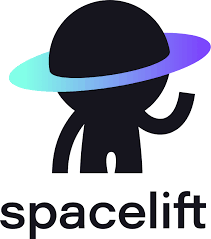Building for the cloud today means moving fast without breaking everything in the process. That’s where CI/CD tools come in – they bridge the gap between writing code and seeing it run in production. Instead of manually managing builds, tests, and deployments, these tools help teams automate the boring stuff so they can focus on actually shipping features. In this guide, we’ll look at the most reliable CI/CD platforms that make cloud DevOps smoother, from startup-friendly setups to enterprise-grade pipelines that never miss a beat.

1. AppFirst
AppFirst is a CI/CD tool for cloud DevOps that lets teams stay focused on building applications instead of managing infrastructure. The platform handles provisioning automatically, so developers don’t have to maintain Terraform, YAML, or provider-specific scripts. Teams simply define the compute, database, or messaging resources an app requires, and AppFirst creates secure, compliant environments that run across AWS, Azure, or GCP.
AppFirst is built for fast-moving engineering teams that want to deliver software quickly without the usual DevOps overhead. Each deployment comes with integrated logging, monitoring, and security best practices. Whether used as a SaaS product or installed on-premises, it keeps cost visibility, compliance, and performance tracking in one place. It offers a practical way to standardize cloud infrastructure while letting development teams keep full ownership of their applications from start to finish.
Wichtigste Highlights:
- CI/CD tool for cloud DevOps that automates secure infrastructure provisioning
- No need for Terraform, CDK, or YAML setup
- Works across AWS, Azure, and GCP
- Built-in logging, monitoring, and compliance controls
- Supports SaaS and self-hosted deployment options
Best Choice For:
- Teams that want to ship apps without managing infrastructure
- Companies standardizing cloud operations across multiple providers
- Developers looking to reduce DevOps complexity and speed up delivery
- Organizations needing secure, automated provisioning without building internal tooling
Kontakte:
- Website: www.appfirst.dev

2. Buildkite
Buildkite is for teams who’ve outgrown basic CI/CD tools and need something that can actually keep up. It’s flexible enough to run on your own hardware or in the cloud, and you can scale it up fast – even to thousands of concurrent builds if you need to. The pipelines are dynamic, meaning they can adjust at runtime and handle pretty complex workflows without slowing down.
What makes Buildkite stand out is how it balances power and control. You can customize pretty much everything, from how tests run to how artifacts are stored, but it never feels overly complicated. It’s used by big teams running massive codebases, but smaller groups can still get value from it without needing a dedicated DevOps department. If you want to automate at scale and still keep a grip on your infrastructure, Buildkite hits a nice middle ground.
Wichtigste Highlights:
- Scalable orchestration for big workflows
- Dynamic pipelines that adapt as they run
- Works with both self-hosted and cloud agents
- Smart test optimization and artifact management
- Fine-grained access and audit controls
Best Choice For:
- Large engineering teams managing complex systems
- Developers dealing with big monorepos
- Teams that need deep customization options
- Companies prioritizing performance and control
Kontakte:
- Website: buildkite.com
- LinkedIn: www.linkedin.com/company/buildkite
- Twitter/X: x.com/buildkite

3. GitHub Actions
GitHub Actions takes CI/CD and drops it right inside your GitHub repo, which makes life a lot easier. You can set up workflows to build, test, and deploy automatically whenever something happens – like a pull request, commit, or release. It runs on Linux, macOS, or Windows, and you can even bring your own runners if you prefer working on your own hardware or cloud setup.
The best part is how it fits naturally into the workflow you’re already using. There’s no need to jump between tools or copy configurations around. The Actions marketplace has prebuilt automations for almost everything, and if you can’t find one, you can write your own. Live logs, built-in secret handling, and real-time feedback make debugging easy. It’s simple, flexible, and doesn’t try to be more than it needs to be, which is exactly why a lot of teams stick with it.
Wichtigste Highlights:
- Built directly into GitHub for seamless CI/CD
- Supports multiple systems and programming languages
- Marketplace full of reusable workflow actions
- Secure secret storage and multi-container testing
- Real-time logs for fast feedback and collaboration
Best Choice For:
- Teams already working in GitHub
- Developers who want automation close to their code
- Open-source maintainers and small DevOps teams
- Anyone looking for a simple way to build and deploy
Kontakte:
- Website: github.com
- LinkedIn: www.linkedin.com/company/github
- Facebook: www.facebook.com/GitHub
- Instagram: www.instagram.com/github
- Twitter/X: x.com/github

4. AWS CodePipeline
AWS CodePipeline is Amazon’s built-in tool for automating continuous delivery inside the AWS ecosystem. It helps teams move code from commit to deployment without managing servers or complex infrastructure. You can connect it to your existing AWS services, define each stage of your release process, and let the pipeline handle testing, builds, and deployments automatically. Everything runs as a managed service, so you spend less time setting up environments and more time focusing on how your application actually runs.
It’s flexible enough to adapt to whatever workflow you already have. CodePipeline works with third-party tools, supports event-based triggers, and fits right into other AWS developer services. You can define custom actions, set up approval gates, and even integrate your own systems if you need more control. It’s a practical option for teams already using AWS who want a simple, scalable way to keep software updates flowing reliably.
Wichtigste Highlights:
- Fully managed CI/CD service with no server setup
- Native integration with AWS tools and third-party services
- Supports custom actions and approval stages
- Event-driven automation for faster releases
- Centralized access and notification controls
Best Choice For:
- Teams already building and deploying on AWS
- Developers who prefer managed services over manual setup
- Organizations needing secure, automated release pipelines
- Projects that benefit from seamless AWS integration
Kontakte:
- Website: aws.amazon.de
- LinkedIn: www.linkedin.com/company/amazon-web-services
- Facebook: www.facebook.com/amazonwebservices
- Instagram: www.instagram.com/amazonwebservices
- Twitter/X: x.com/awscloud

5. Semaphore
Semaphore focuses on making CI/CD easier for teams who’ve moved past basic tools but don’t want the heavy lift of enterprise systems. It offers a visual workflow builder that lets you design pipelines without writing tons of YAML, and it scales automatically in the cloud. You can run builds in parallel, manage deployments across environments, and even use self-hosted runners if you want more control over infrastructure.
It’s built for flexibility, with strong support for Docker, Kubernetes, and monorepo setups. Semaphore’s smart caching and incremental builds help cut down build times, while its analytics tools give teams visibility into test reliability and performance. The platform also includes approval gates, access control, and hybrid hosting options. It’s a developer-friendly solution for teams who need something powerful but still approachable.
Wichtigste Highlights:
- Visual pipeline builder with auto-generated YAML
- Cloud-native and hybrid self-hosting options
- Supports containers, Kubernetes, and multi-cloud workflows
- Built-in analytics and test optimization
- Role-based access and deployment governance
Best Choice For:
- Teams managing complex cloud or containerized apps
- Developers who prefer visual workflows over heavy configuration
- Companies running large monorepos or multi-cloud setups
- Teams looking to balance flexibility and ease of use
Kontakte:
- Website: semaphore.io
- LinkedIn: www.linkedin.com/company/semaphoreci
- Twitter/X: x.com/semaphoreci

6. Harness
Harness takes CI/CD beyond traditional automation by adding AI into the mix. It’s designed to help teams deliver code faster while keeping security, testing, and cost optimization in check. The platform uses AI agents that handle everything from continuous integration and delivery to resilience testing, compliance, and even cloud cost management. Pipelines can span multiple clouds and services, and automation is built around the idea of making software delivery safer and more predictable.
What stands out is how Harness connects all parts of the DevOps cycle under one roof. Developers can build, test, deploy, and monitor apps without juggling separate tools. Its AI capabilities detect issues early, run self-healing tests, and give insights that make every release smoother. For teams struggling with complex pipelines or scaling across environments, Harness feels like a single place to manage delivery intelligently.
Wichtigste Highlights:
- AI-powered automation for CI/CD, testing, and security
- Supports multi-cloud, multi-service deployments
- Predictive analytics and self-healing test automation
- Built-in governance, compliance, and cost optimization
- Integrated modules for infrastructure, delivery, and monitoring
Best Choice For:
- Enterprises managing large, distributed cloud systems
- Teams interested in AI-driven DevOps automation
- Organizations focused on secure, compliant delivery pipelines
- Developers looking to reduce manual work and improve reliability
Kontakte:
- Website: www.harness.io
- LinkedIn: www.linkedin.com/company/harnessinc
- Facebook: www.facebook.com/harnessinc
- Instagram: www.instagram.com/harness.io
- Twitter/X: x.com/harnessio

7. Spacelift
Spacelift is built for infrastructure automation rather than application code, but it fits right into modern DevOps workflows. It connects tools like Terraform, OpenTofu, and Ansible into a single orchestrated workflow that makes provisioning and configuration smoother. The platform focuses on giving developers freedom to move quickly while still giving platform teams the guardrails they need for governance and compliance.
It’s flexible, secure, and integrates cleanly with existing cloud and IaC setups. Teams can detect drift, enforce policies, and standardize infrastructure provisioning across multiple environments. Spacelift also supports both SaaS and self-hosted deployments, which makes it a good fit for companies that operate in regulated sectors or prefer to keep everything on-prem.
Wichtigste Highlights:
- CI/CD for infrastructure with Terraform, OpenTofu, and Ansible
- Automated governance, drift detection, and compliance controls
- Developer self-service with platform guardrails
- Works with SaaS or self-hosted environments
- Seamless integrations with major cloud providers and VCS tools
Best Choice For:
- Teams managing Infrastructure-as-Code at scale
- Organizations needing strict compliance and governance
- DevOps teams balancing speed with security
- Companies preferring hybrid or on-premise control
Kontakte:
- Website: spacelift.io
- Email: info@spacelift.io
- Address: 541 Jefferson Ave. Suite 100, Redwood City CA 94063
- LinkedIn: www.linkedin.com/company/spacelift-io
- Facebook: www.facebook.com/people/spaceliftio
- Twitter/X: x.com/spaceliftio
8. Jenkins
Jenkins has been around for years, and it’s still one of the most flexible CI/CD tools out there. As an open-source automation server, it can handle everything from simple builds to full-scale delivery pipelines. It supports hundreds of plugins, so it can integrate with nearly any tool in your stack. Jenkins can run on multiple platforms, distribute workloads across agents, and be customized for just about any workflow you can think of.
While Jenkins requires more setup than newer cloud-native tools, its strength lies in its community and extensibility. You can adapt it to fit almost any environment, whether it’s cloud, hybrid, or on-prem. It’s a dependable choice for teams that like open-source flexibility and don’t mind a bit of hands-on management.
Wichtigste Highlights:
- Open-source automation server with huge plugin ecosystem
- Supports builds, testing, and deployments across any platform
- Extensible and highly customizable architecture
- Distributed builds for faster performance
- Active community and strong ecosystem support
Best Choice For:
- Teams that prefer open-source and full customization
- Developers managing hybrid or on-prem environments
- Organizations with existing Jenkins-based pipelines
- Technical teams comfortable with setup and plugin management
Kontakte:
- Website: www.jenkins.io
- LinkedIn: www.linkedin.com/company/jenkins-project
- Twitter/X: x.com/jenkinsci

9. Drone.io
Drone.io is a lightweight CI/CD platform that runs pipelines inside Docker containers, giving developers a clean and isolated build environment. Every step of a pipeline runs in its own container, which makes it easy to manage dependencies and avoid conflicts. It supports multiple languages, platforms, and architectures, and you can connect it to any source code manager like GitHub, GitLab, or Bitbucket. Configuration is stored as code, so teams can define workflows directly in their repositories without extra setup.
What makes Drone.io appealing to many DevOps teams is how simple it is to scale. You can install it in minutes from a single binary, customize it with plugins, and add advanced features like approval workflows, secret management, or extended YAML syntax when needed. It feels like a natural fit for teams that want container-based automation without dealing with heavy infrastructure or complex integrations.
Wichtigste Highlights:
- Container-native pipelines using Docker
- Simple YAML configuration stored in version control
- Works with any major source control system
- Supports all major languages and platforms
- Easy to scale and customize with plugins and extensions
Best Choice For:
- Teams using containerized environments for builds and testing
- Developers who prefer clean, code-defined pipelines
- Organizations wanting quick setup with minimal maintenance
- Projects that value simplicity and portability over large platform ecosystems
Kontakte:
- Website: www.drone.io
- Twitter/X: x.com/droneio

10. CircleCI
CircleCI focuses on giving teams automation and speed in their delivery pipelines. It connects directly with GitHub, GitLab, and Bitbucket, automating builds, tests, and deployments from the moment code is committed. Developers can customize workflows for nearly any use case, from web and mobile apps to complex AI or containerized environments. It scales automatically, supports hybrid runners, and helps teams move faster without needing to manage infrastructure.
What makes CircleCI practical is its mix of flexibility and reliability. Teams can run workflows in parallel, use caching to save build time, and integrate third-party tools easily through orbs—reusable configuration packages. Its design suits developers who want pipelines that adapt to how they already work, not the other way around. With broad support for languages, frameworks, and environments, CircleCI fits well into most modern DevOps setups.
Wichtigste Highlights:
- Native integrations with GitHub, GitLab, and Bitbucket
- Scalable pipelines with caching and parallelism
- Hybrid cloud and self-hosted runner support
- Supports a wide range of programming languages and frameworks
- Orbs system for reusable pipeline components
Best Choice For:
- Teams looking for flexible cloud-based CI/CD automation
- Developers who want pipelines tightly integrated with source control
- Organizations managing complex multi-environment workflows
- Companies needing fast builds without maintaining infrastructure
Kontakte:
- Website: circleci.com
- LinkedIn: www.linkedin.com/company/circleci
- Twitter/X: x.com/circleci

11. Spinnaker
Spinnaker is an open-source continuous delivery platform originally created at Netflix and built for managing multi-cloud deployments. It helps teams release software faster and more reliably by combining flexible pipeline management with integrations across major cloud providers like AWS, Google Cloud, Azure, and Kubernetes. With its multi-cloud approach, teams can standardize their release process and handle complex deployment workflows without being locked into one environment.
Beyond automation, Spinnaker includes practical features like built-in deployment strategies (blue/green and canary), role-based access control, and integrations with tools like Jenkins, Travis CI, and Datadog. It’s designed for large or distributed teams that need visibility, traceability, and confidence in production rollouts. For DevOps teams dealing with large-scale, hybrid, or multi-cloud infrastructure, Spinnaker offers the flexibility and governance to keep releases consistent and under control.
Wichtigste Highlights:
- Open-source, multi-cloud continuous delivery platform
- Integrates with AWS, Google Cloud, Azure, and Kubernetes
- Supports canary, blue/green, and custom deployment strategies
- Built-in access control, monitoring, and notification options
- Strong community and active cloud provider integrations
Best Choice For:
- Enterprises managing hybrid or multi-cloud infrastructure
- Teams standardizing deployments across multiple environments
- Organizations needing advanced release governance
- DevOps teams prioritizing visibility and control in delivery pipelines
Kontakte:
- Website: spinnaker.io
- Twitter/X: x.com/spinnakerio
12. TeamCity
TeamCity by JetBrains is a CI/CD platform built for flexibility and reliability across a wide range of tech stacks. It supports both on-premises and cloud deployments, letting teams choose how to run and scale their pipelines. TeamCity focuses on making builds faster and feedback loops shorter through smart caching, test parallelization, and configuration as code. Teams can manage pipelines visually or programmatically using Kotlin or YAML, giving them flexibility as projects grow.
The platform includes strong compliance and security standards, making it suitable for industries like finance and healthcare where data protection is critical. It integrates easily with existing developer tools and supports thousands of concurrent builds. TeamCity fits teams that want to balance speed and safety, whether they’re deploying enterprise-scale systems or running smaller, fast-moving projects.
Wichtigste Highlights:
- On-premises and cloud deployment options
- Configuration as code with Kotlin DSL or YAML
- Smart caching, build chains, and test parallelization
- Compliance-ready with SOC 2 certification
- Works across large, multi-project environments
Best Choice For:
- Enterprises with strict security or compliance needs
- Developers managing complex multi-repository builds
- Teams requiring flexibility between cloud and self-hosted setups
- Organizations scaling CI/CD pipelines across large engineering groups
Kontakte:
- Website: www.jetbrains.com
- Phone: +1 888 672 1076
- Email: sales.us@jetbrains.com
- Address: JetBrains Americas, Inc. 989 East Hillsdale Blvd. Suite 200, CA 94404 Foster City, USA
- LinkedIn: www.linkedin.com/company/jetbrains
- Facebook: www.facebook.com/JetBrains
- Instagram: www.instagram.com/jetbrains
- Twitter/X: x.com/jetbrains

13. GoCD
GoCD is an open-source CI/CD server from Thoughtworks, built for teams that need clear visibility into their entire delivery pipeline. It focuses on modeling complex workflows and showing every stage of the release process through its value stream map. This makes it easier to see dependencies, track progress, and spot bottlenecks before they slow down deployments. GoCD supports parallel execution, dependency management, and detailed traceability across builds.
Unlike tools that rely heavily on plugins for core functionality, GoCD includes most CD features out of the box. It integrates with Kubernetes, Docker, and popular cloud platforms while keeping configuration simple and transparent. Teams can extend it further with custom plugins when needed. For DevOps teams who value full visibility, traceability, and control, GoCD provides a straightforward way to manage and optimize continuous delivery pipelines.
Wichtigste Highlights:
- Open-source CD platform with end-to-end visualization
- Value stream map for clear workflow monitoring
- Native support for Docker, Kubernetes, and cloud environments
- Parallel execution and dependency tracking
- Extensible plugin architecture for integrations
Best Choice For:
- Teams managing complex multi-stage deployment workflows
- Developers needing strong traceability and visibility in pipelines
- Organizations looking for open-source and self-hosted CI/CD tools
- Projects where transparency and process optimization matter most
Kontakte:
- Website: www.gocd.org
Schlussfolgerung
There’s no single CI/CD tool for cloud DevOps that fits everyone perfectly, and honestly, that’s a good thing. Each platform we’ve looked at has its own rhythm, strengths, and quirks that make it work for different teams. Some focus on pure automation and speed, others on visibility, governance, or scale. The real advantage comes from finding the tool that matches how your team actually builds and ships software, not just what looks good on paper.
At the end of the day, CI/CD isn’t about ticking off buzzwords like “pipeline automation” or “multi-cloud.” It’s about removing friction so developers can move fast without breaking everything in the process. Whether you lean toward open-source flexibility, AI-driven automation, or container-first pipelines, the goal stays the same – keep code moving smoothly from idea to production. Pick what aligns with your workflow, adapt as you grow, and let the tools handle the busywork so your team can focus on building what really matters.


